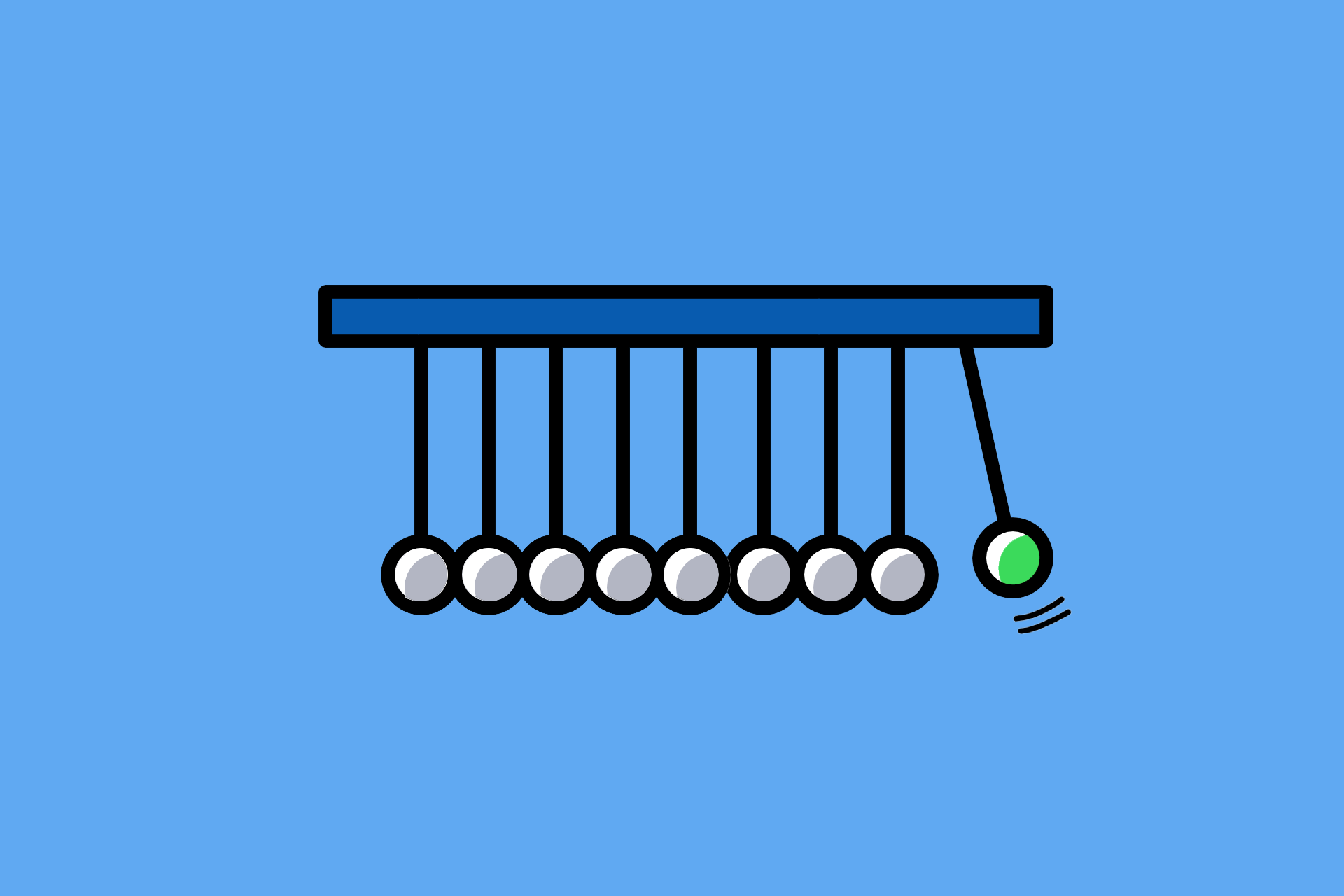How to ask the right Question?
Smartpedia: A question is an utterance that challenges a response and is used to gather information, test knowledge or stimulate thinking.
Question – a means of communication and a way to gather information
“Successful people ask better questions and get better answers”. – Anthony Robbins, book author and NLP trainer
Questions are an important part of our lives. They help us
- communicate with each other,
- gather information,
- clarify our thoughts,
- explore motives and attitudes,
- test knowledge,
- stimulate thinking and
- make better decisions.
In a business context, they play a central role in all areas and disciplines, such as product development, designing projects, solving problems, attracting and retaining customers and partners, or finding and selecting employees.
Different question types for different purposes
There is a whole range of question types. Here you will find a selection:
Open questions allow the respondent to give detailed information. These questions are not bound to a specific answer and the respondent can express his/her thoughts and opinions.
- What experience have you had with our product?
- What support would you like from us during the software implementation?
- How can we help you with a code review?
Closed questions can be answered with a simple yes or no or with specific information. These questions are particularly useful for collecting specific data.
- Have you used our service before?
- Are you satisfied with our software design?
- Did you find the information you were looking for on our website?
A direct question can be asked openly with words like “what”, “where”, “when”, “how” and “why” or closed. The aim is to get information in a direct way:
- When will the Lean Coffee take place?
- Will you recommend us?
- How much does the product cost?
An indirect question is embedded in a statement and is not asked directly. It is often used to ask for information in a more polite or less direct way.
- Can you tell me when the next Open Space is?
- Do you know if the hotline is available on weekends?
- Could you tell me when the business case will be ready?
Hypothetical questions ask respondents to imagine a scenario and think about what they would do or how they would react. They are considered a valuable tool for promoting critical thinking, encouraging self-reflection and creativity, and helping to make better decisions in the real world.
- If you could choose your employer, which company would you want to work for?
- If you had a €10 million budget, how would you redesign your department?
- If you could have one superpower, what would it be and why?
Paradoxical questions are often used to challenge our assumptions and ways of thinking and to explore seemingly contradictory ideas or situations. They can be used to encourage critical thinking and creative problem solving by getting people to think beyond conventional wisdom or common sense.
- How can we increase profits and reduce costs at the same time?
- If everything is possible, is it possible for something to be impossible?
- If a tree falls in a forest and no one is around to hear it, does it make a sound?
Alternative questions¹ are used to offer a limited number of choices or options, where the answer is one of the given alternatives. They are often used in situations where a decision needs to be made or a preference established. Providing alternatives can make it easier for the person to make a decision and give a clear answer.
- Should we prioritise adding new features to the product or improving its performance?
- Do we want our product to appeal to a wider audience or focus on a specific niche market?
- Would it be better to launch the product now with basic features or delay the launch to add advanced features?
Leading questions suggest a particular answer or response. They can be problematic because they can influence the respondent’s answer and may not reflect true opinions or beliefs.
- Have you considered conducting a customer survey to better understand their needs and preferences?
- Would it be helpful to set up a customer loyalty programme to incentivise repeat business?
- Have you thought about developing a content marketing strategy to attract and retain potential customers?
Rhetorical questions are not meant to be answered. Rather, they are used to make a point or highlight a particular thought. They are useful in situations where it is important to encourage the listener or reader to think critically about a particular topic.
- Do we really want to publish this code without testing it thoroughly?
- Is it a good idea to go live with this feature without getting user feedback first?
- Do we want to keep accumulating technical debt?
The Miracle Question² uses a special structure often used in solution-focused therapy to shift focus away from negative thoughts and towards positive change. By imagining a positive future, people can clarify their goals and desires and plan concrete steps to get there.
- Imagine a miracle happens tonight and you wake up tomorrow and your burnout is gone. What would your life look like tomorrow?
- Imagine a miracle happens tonight and your conflicts with your supervisor are resolved. What would your relationship look like tomorrow?
- Imagine that a miracle happens tonight and you suddenly have the necessary resources and skills to lead your business to success. What would your business look like tomorrow?
Circular questions, also known as recursive or reflexive questions, are considered self-referential. They can be used to explore underlying assumptions, beliefs and values, and allow for a deeper level of self-knowledge and understanding.
- How do our core values influence the way we make decisions, and how do our decisions in turn reinforce our core values?
- In what ways do our individual behaviours and actions contribute to the culture of our team, and how does this culture in turn influence our behaviours and actions?
- How does the feedback we receive from others reflect our own behavior and attitudes, and how do our own attitudes and behaviors influence the feedback we receive?
A Gretchen question targets moral, ethical or religious aspects and is often used to determine a person’s value system or beliefs. It usually aims to get a person to reveal their beliefs or values, which may then lead to further discussion or debate. The term comes from Goethe’s Faust, in which Gretchen is confronted by the devil with “Now tell me, how do you feel about religion?”.
- Do you think we should send emails to people without explicit consent like our competitors?
- Should we introduce a quota for women to fill positions in the company?
- How would your cooperation with colleagues change if you knew which party they voted for?
A trick question is designed to trap or embarrass a person. Its intention is not to gather information, but to put the person in an uncomfortable situation or to make them lie.
- When did you recognise that regular feedback is an important success factor in product development?
- Why are you against the disclosure of salaries?
- When did you stop valuing likes as a measure of quality postings?
Certainly, other question types³ can be distinguished. Obviously, the question type has a significant impact on the quality of the answer. Different question types are better suited to different contexts, and the key to choosing the right question is to understand the purpose of the question and tailor it to the situation.
The art of asking the right question
Before you ask a question, think about what you want to achieve with the answer. Are you looking for information, do you want to understand a person’s point of view, or do you want to stimulate creative thought? Your goal will help you determine the type of wording you should use.
The type of question you ask depends on who you are talking to. Are you talking to an expert or a layperson? Does he have extensive background knowledge or is he new to the subject? Consider the level of knowledge and tailor your wording to the recipient.
A well-formulated question is clear, concise and easy to understand. It may also be useful to avoid jargon or technical language and formulate your interest in a way that is easy to understand.
Open-ended questions are great for stimulating conversation and encouraging creative thinking. They give the person the opportunity to answer in their own words and give more detailed, sophisticated answers.
Leading questions can distort the answer and limit the range of responses. Instead, try to use neutral wording that gives the interlocutor the opportunity to give his or her own view.
Be prepared to change your question depending on the answer. If you do not get the information you want, try to rephrase your request or ask a follow-up question to clarify the situation.
If you master the art of asking the right question, you are sure to increase the likelihood of getting quality answers, and thus achieving what you are hoping for:
- gathering of information,
- clarifying thoughts,
- fathoming and understanding motives and attitudes,
- testing knowledge,
- stimulating thought
- or making better decisions.
Question-based methods in corporate use
Asking questions is important for companies for a variety of reasons. By understanding their customers’ needs and preferences, companies can develop products that meet those needs and provide a better user experience. This can lead to higher customer satisfaction and loyalty, as well as increased sales and revenue. In addition, questions help identify problems and develop effective solutions or innovations.
In business practice, there are many methods that use questions to try to improve aspects of interaction in organisations. Here is a small selection:
- The Osborn Checklist is a method to further develop existing products, concepts, processes or ideas by means of a series of questions.
- SCAMPER is a creativity method that uses a series of keywords and questions to facilitate the search for ideas.
- Starbursting is a creativity method that uses questions to illuminate facets of a topic before seeking answers to the questions.
- The 5W1H method is an approach to narrowing down and solving problems. It is based on 6 defined, open-ended questions.
- The 5-Whys method is a root cause analysis tool that explores an issue by asking why questions five times.
- The headstand technique is a brainstorming format in which questions to be answered are formulated negatively and consolidated answers are turned into positives.
In addition, questions help clarify issues in all business disciplines. Be it in determining correct, complete, unambiguous, contradiction-free, testable and traceable requirements, in defining the scope of a project, in eliminating conflicting goals or in hiring employees.
Tips for effective questions
Below are some additional tips that can be useful in the context of business:
- Don’t be afraid to ask follow-up questions to clarify or expand on an answer. This can help you gain a deeper understanding of the topic at hand.
Make sure your questions are relevant to the topic at hand and avoid addressing several aspects at once. This can easily lead to confusion or overwhelm. - Pay attention to the answers you receive and show that you are engaged by asking further questions or paraphrasing what you hear. This can help build rapport and encourage more open communication.
- Don’t be afraid to adapt your questions during the conversation to the answers you receive. This way you can get more specific or detailed information and show that you are willing to listen and adapt to the interviewer.
- It can be very useful to combine different types of questions in an interview, as each type can elicit different responses and provide different types of information. For example, with a mixture of open, closed, direct and indirect questions, you can gather both specific details and more general insights from your interviewer. In addition, the combination can also help to keep the conversation exciting and dynamic and demonstrate your flexibility and adaptability as a communicator. However, it is important to use these different types of questions in a way that feels natural and fits the context of the conversation. Avoid using one type too often.
In some industries and disciplines it is common to use questionnaires (e.g. when selecting new suppliers) or interview guides with defined questions (e.g. in sales during acquisition). This can be useful, but should always be done carefully and optimised if necessary.
Impulse to discuss
What strategies can companies adopt to foster a culture of questioning, both within the organisation and when dealing with customers, and how can this benefit the company in terms of innovation, growth and customer satisfaction?
Notes:
[1] A special form of this type of question is the so-called Wicked Question from the Liberating Structures. It questions supposed contradictions by asking, for example, “How can it be that we are … and … at the same time?”
[2] The Miracle Question was “invented” by Steve de Shazer and Insoo Kim Berg in 1984. Together with Yvonne Dolan, de Shazer published a book on More than Miracles.
[3] In the legal context, for example, it is referred to as the cardinal question. It discusses who wants what from whom?
Many companies publish so-called FAQ: Frequently Asked Questions. We do too, by the way.
We would like to recommend a book by Warren Berger: A More Beautiful Question: The Power of Inquiry to Spark Breakthrough Ideas. This book explores the importance of questioning for innovation and creativity. It offers insights and practical tips on how to ask better questions and use questions as a tool for problem solving and innovation.
If you like the article or would like to discuss it, please feel free to share it in your network. And if you have any comments, please do not hesitate to send us a message.
And here you will find additional information from the t2informatik Blog:



